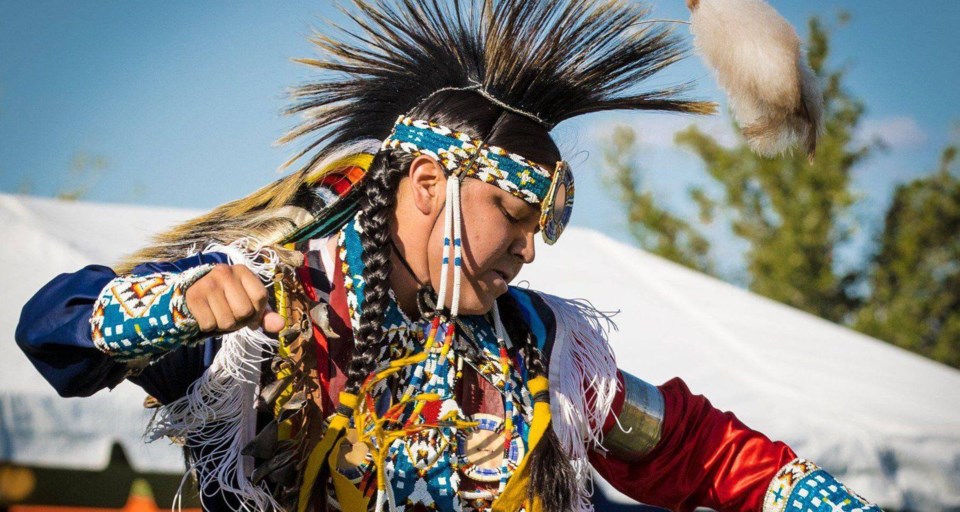(ANNews) – Harold Gadwa is a well-known Cree Grass Dancer who believes Indigenous people can reconcile trauma caused by residential schools through powwow.
Gadwa is an artist, Porcupine quill art fabricator, Muay Thai fighter, and youth worker for Pimatisowin Group Care in Maskwacis (Samson). He is from Kehewin Cree Nation and Samson Cree Nation.
“I am a proud father of my seven-month-old son Côwêkanapisîs, a husband to my amazing wife Amber Flanagan,” said Gadwa.
Gadwa is a Grass Dancer at powwows. He explained, “They’re many iterations of this style of dance. I mainly follow the style of the Omaha Tribe. However, the Sioux have made the dance their own and brought it up to the plains and that why the Plains Cree Tribe dances it.”
According to many, the grass dance is a style of modern men’s powwow dancing originating in the warrior societies on the Northern Great Plains. Unlike most forms of powwow dancing, the grass dance regalia generally has no feathers besides the occasional roach feather. Instead, the regalia consist of brightly coloured fringe made of either yarn, broadcloth, or ribbon.
Gadwa said that one of the most rewarding things about being a Cree Grass dancer is when young people admire his dancing style. It is very gratifying, he said, “when they say they want to dance just like you and offer you tobacco for knowledge. You are doing something right if you’re making the next generation proud. That defines the healthy pride of a dancer.”
After nearly a century of our traditional ways being outlawed, Gadwa feels empowered to dance with his fellow Indigenous brothers and sisters.
“Powwow is one of many things that make one feel alive,” he said.
“Our DNA is structured with 100 years of trauma from residential and boarding schools. We can reconcile within ourselves through powwow.”
“This is why we have so many powwow families who adopt each other as sons, daughters, kids, mother, father, grandfather, grandmother, grandsons, granddaughters, grandchildren, uncle, aunts,” added Gadwa.
He said the powwow trail is beautiful, and every year you can try to visit old or new locations. Powwows are being hosted all over North America.
“It isn’t exclusive to one area. I have been travelling the Alberta and Saskatchewan circuit my whole life.”
“Then, in 2018, I started travelling to the USA. People down in the states are friendly to visitors. No one is proud; everyone is welcoming. They even feed you if you’re hungry. Also, powwows end earlier down there too. So that’s nice,” said Gadwa.
He said the powwow community is generous and thoughtful. He describes a time when he was struggling. “I was in New York for Salamanca powwow back in 2019 pre-covid. A member of the REDRUM First Nations brotherhood saw me selling earrings for gas money. He thanked me for coming from Alberta, Canada, and generously gave me $90 USA for gas money. That was the most humbling thing anyone has ever done for me.”
Gadwa says you’ve got to stay in shape for the powwow season. “I like running the stairs, working on leg strength, cardio, diet, and practicing,” he said.
Gadwa ended the interview with advice for upcoming dancers or returning dancers: “Get back out there—no matter who discourages you. No one should have any opinion about how you should dance or move. That’s the beauty of powwow. Dance your style as the emcee would say.”




